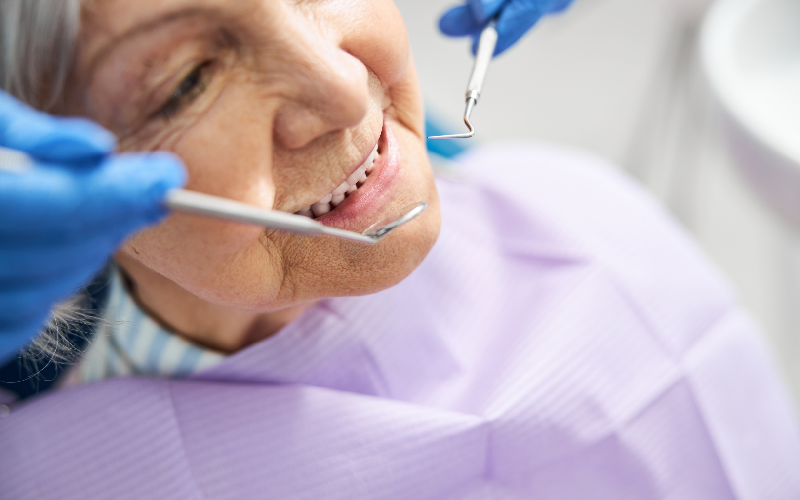
Provision of Oral Health Care for the Institutionalized Elderly
News
May 18, 2022
By Kenneth Eaton & Leonie Short
In most countries life expectancy has increased significantly over the last 20 years (WHO GHE 2021). In many countries, including the United States, the elderly are now far more likely to retain some or most of their teeth into old age (Dye et al. 2018). Unfortunately, if their mouths are not well maintained, a range of underlying health problems can be exacerbated. These include Type 2 diabetes (Preshaw et al. 2012) and dementia (Ide et al. 2016). If their oral hygiene is poor and their immune system is compromised, they are also at higher risk of developing acquired pneumonia (Sjögren et al. 2008). Poor oral hygiene also increases the risk of greater frailty (Hakeem et al. 2019). Residents in care homes are more at risk of these problems.
The problems have been recognised by Governments and other organisations in some countries. For example, in England, the National Institute for Health and Clinical Excellence has published guidelines on the oral health for adults in care homes (NICE 2016) and the Care Quality Commission subsequently reviewed the provision of oral health care in care homes (CQC 2019). It became apparent that the majority of care home owners and carers were unaware of how they could address the problem of ensuring that the mouths of all their residents were maintained daily to a satisfactory standard. NHS England then produced a Framework for Enhanced Health in Care Homes (NHS England and NHS Improvement 2020), which was followed by an oral health toolkit for adults in care homes (Government UK 2020). Previously, there had been pilot projects to help address the problem (Eaton et al. 2016). In the United States, a comprehensive package of oral health training material Smiles for Life, has been developed, it includes a module on geriatric dentistry (Smiles for Life 2022).
Apart from the problem of maintaining the oral health of care home residents on a daily basis, there is frequently an access to care problem when they need to see a dentist or dental hygienist/therapist. Advice and a provisional diagnosis can be provided via digital links (Teledentistry) (Aquilanti et al. 2020). Recent examples of this have taken place in France (Aquilanti et al. 2020), Japan (Inquimbert et al. 2020) and Australia (Tynan et al. 2018a; Tynan et al. 2018b; Mariño et al. 2016).
Findings from research into the assessment of mobile phone digital images by offsite dental practitioners to improve oral health in school children (Estai et al. 2020) as well as the utilisation of real-time artificial intelligence for the screening of oral diseases (Smilio.ai) offer further innovative, cost-efficient and person-centred care opportunities for the provision of oral health care for the institutionalized elderly.
A number of oral health practitioners are providing oral health care training for nurses, allied health professionals and carers in the aged, home and disability sectors in the United Kingdom (Knowledge Oral Healthcare) and in Australia (Seniors Dental Care Australia). The U.S. Department of Veterans Affairs integrated oral health care into inpatient care through the nurse workforce to translate research findings into clinical practice changed. This initiative has improved oral hygiene and greatly reduce cases of hospital-acquired pneumonia.
Efforts are also being made to lobby and advocate for improved oral health care for the elderly. In Australia, a broad consortium of 12 key stakeholders developed and released a media release on World Oral Health Day before the May federal election. Apart from dental associations, the consortium included the Public Health Association of Australia, Aged & Community Services Australia, Consumers Health Forum of Australia, Australian Council of Social Service and the Council on the Ageing.
Social media is also being used to advocate the oral health of the institutionalized elderly. For example, the Australian Health Journal produced and released a video on World Oral Health Day to prioritise oral health in aged care and disability in Australia and the Australian Dental Association (ADA) is running a ‘Stop the Rot’ campaign. The ADA is calling on all political parties to ‘Stop the Rot’ by adopting health strategies to address serious oral health issues in the aged care system.
With people’s increasing life expectancy and the increasing likelihood of the elderly retaining more teeth, it is important for governments, aged care providers, dental practitioners, health professionals and consumer associations to work together to improve oral health care for the institutionalized elderly. Innovations in teledentistry, mobile technology and artificial intelligence have the potential to assist in making oral health accessible for all.
